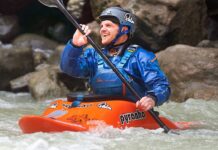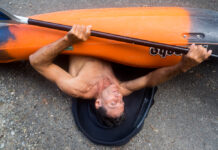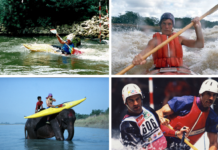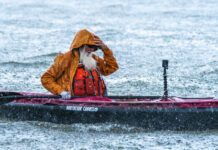From entrepreneurs and explorers to game changers and artists, the wide world of paddlesports is enriched by those who see a need and step up to fill it. Whether welcoming underserved communities, mentoring new paddlers or protecting waterways at risk, here’s who (and what) is changing paddling for the better this year.
6 innovators making paddling more accessible to all
1 Dave Calver
Society for Inclusion and Participation
Transformative river trips for kids and adults with spinal cord injuries
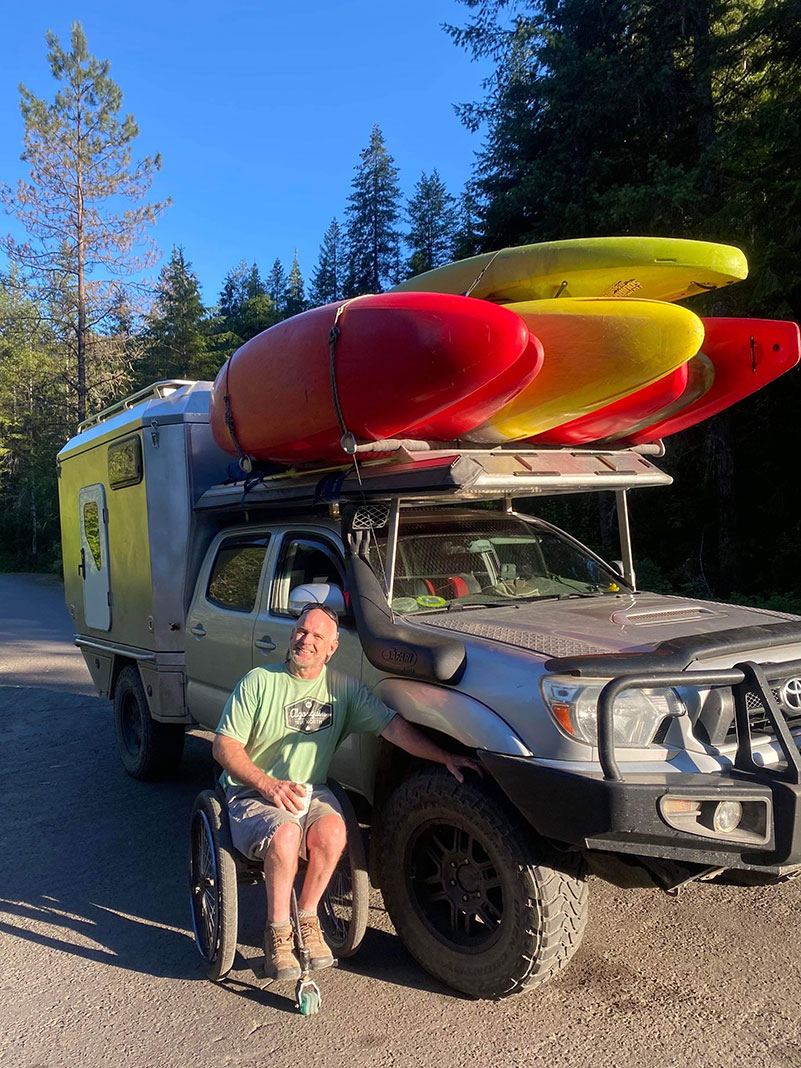
Occupational therapist Dave Calver has dedicated his career to working in wheelchair development in less-resourced countries. He’s a wheelchair user himself and a whitewater paddler for 35 years. In 2020, Calver founded SiP—the Society for Inclusion and Participation—which offers life-changing river adventures to young people, ages 14 to 40, with spinal cord injuries and related disabilities.
“Rivers have an incredible ability to heal,” said Calver.
SiP’s five-day whitewater program follows a standard skills progression on water but is paired with evening rehabilitative health classes on topics including ulcer prevention and sexuality after injury. The five days of on- and off-water learning help participants develop the skills they need to live healthier, independent lives and smash their own preconceived limitations.
“Kayaking is ideal because of the ability of the river to cleanse people, to face their fears, and to understand the scariest outcome they conjured up never came to be,” said Calver. “The ability to move beyond that on the river sets them up for the most soul-searching discoveries.”
Calver added that the river can be an equalizing environment for people with spinal cord injuries: “For people with good upper body mobility and strength, you’d never know once they’re in a kayak—they don’t look any different in the eddy.”
SiP is running youth and adult programs on Ontario’s Madawaska River this summer and at North Carolina’s Nantahala Outdoor Center in October. Calver will take the program to Mexico and Central America in the winter. His vision is to have programs running across Canada and United States each summer, with parallel programs running all year internationally.
“At the end of this program, our participants will have a new depth of knowledge about their disability and the limits they truly have versus the ones society has put on them,” said Calver.
2 Dale Sanders
Octogenarian breaking records and stereotypes for aging adventurers
Forget the “I’m too old for that” excuse. On June 14, 87-year-old Dale “Greybeard” Sanders set out to reclaim his Guinness World Record as the oldest person to paddle the 2,552-mile Mississippi River from source to sea. Sanders first paddled into the record books when he set an age record on the same route in 2015, canoeing it in 80 days at the age of 80.
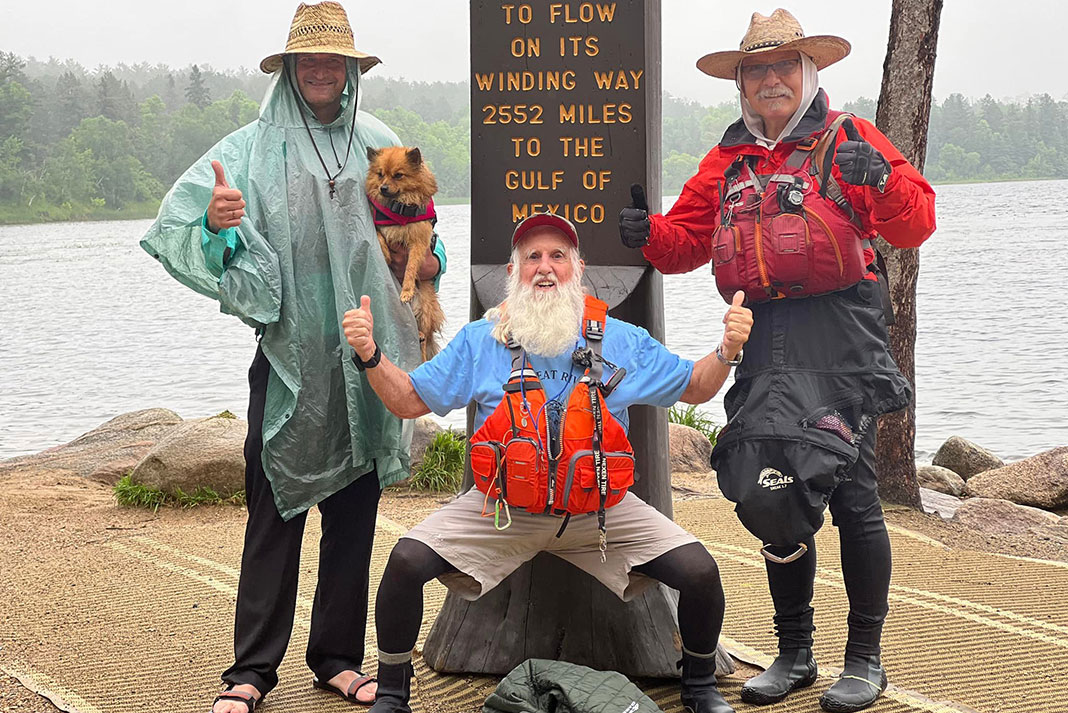
From its source at Lake Itasca, Minnesota, all the way to the saltwater in the Gulf of Mexico, Sanders will be paddling the Mississippi River in a Northwind Solo from Northstar Canoes. He’s named it Perseverance. He hopes to finish the journey in 87 days, arriving at the ocean on September 8, 2022. He’ll need to average about 30 miles a day to snag the record back from its current holder, Stan Stark, who nabbed the title after making the journey last year at the age of 81.
“Records are made to be broken, and I do everything in my power to support challengers,” said Sanders. Following his 2015 Mississippi journey, Sanders again entered the record books in 2017, setting an age record at 82 on the 2,190-mile Appalachian Trail.
All his life, Sanders has had a competitive spirit. He set his first world record in the late ‘50s for holding his breath underwater for six minutes and four seconds. Then, in the mid-’60s, he was a U.S. national underwater spear fisherman champion.
While Sanders uses adventure to keep himself in good shape, it’s the inspiration he provides for others keeping him going. He spoke with Paddling Magazine from the riverside in Minnesota, having just traversed wind-whipped Lake Pepin. “I’m a role model for not only the old but for all ages. It’s overwhelming to have the honor and opportunity,” he said.
Sanders shared the story of a woman from Montana who reached out to tell him she’d been following his adventures for years. “At one point, she was totally paralyzed, and her doctor had told her she’d never walk again. She said she saw me and my adventures, and because of my determination later in life, she was inspired,” said Sanders. “Today, she’s not only walking, she’s thriving. She hikes 100-mile trips. People are inspired by what I’m doing, but they inspire me.”
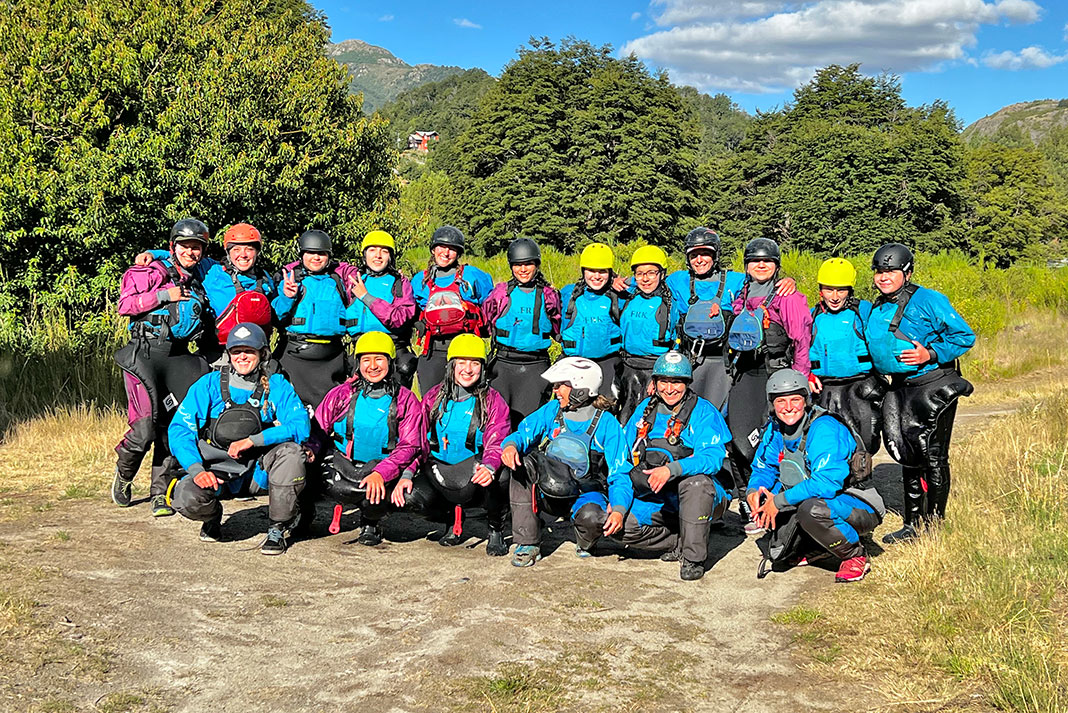
3 Chicas Al Agua
Chicas Al Agua is a by-women, for-local-girls kayaking school in Futaleufú, Chile. Led by the Futaleufú Riverkeeper Foundation, this initiative encourages participants, between the ages of 13 and 17, to practice kayaking and develop leadership skills, teamwork and confidence, and promote the conservation of Chile’s wild rivers.
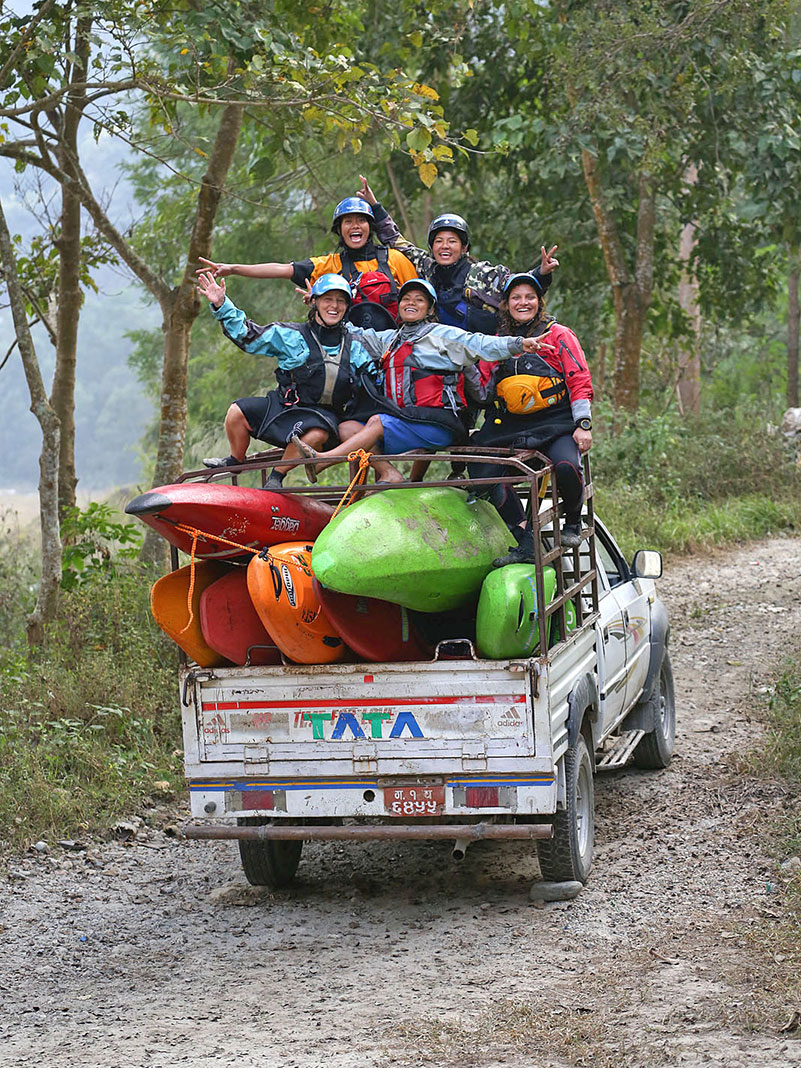
4 Himalayan Adventure Girls
First all-female rafting company in Nepal
“We want to inspire young girls to follow their dreams and become independent, love and care for nature, and empower young girls in the adventure sector.” This is the mantra of Himalayan Adventure Girls, Nepal’s first female-run rafting and trekking company. What started as a female-focused kayak club turned into a business in 2018. The adventure travel company seeks not just to provide tourists with a good time, but to challenge stereotypes in their own communities where women have not traditionally participated in adventure sports. “We want to broaden the horizon for women and have them do things and go places society forbids us,” they added.
5 Ash Manning
Whitewater rafting guide, body inclusivity activist
“The dangers of not creating gear that fits larger bodies is you have people who are going to go out there anyways. They don’t have appropriate flotation, and they don’t have the gear to keep themselves warm, like drysuits,” said Ash Manning, 28, a 10-year whitewater rafting guide from Cleveland, Georgia. Manning speaks on the lack of appropriately sized gear for plus-size adventurers in the short film, All Bodies.
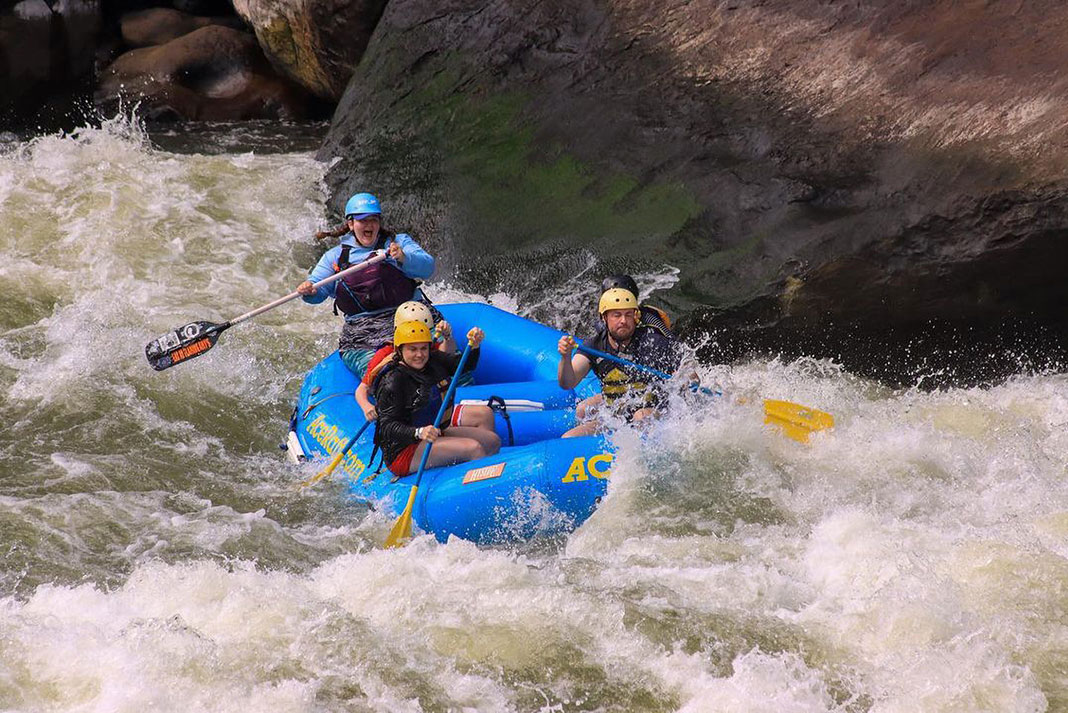
“I hope there’s a plus-size little kid who sees the film and can see themselves going on big adventures. I hope there are people who get an extra push and inspiration to set foot in the outdoors. The outdoors are for everybody. Just because you’re plus size doesn’t mean you’re not capable of being strong and powerful,” said Manning.
6 Craftsman John Su
Team River Runner champion recycling past-their-prime kayaks for charity
John Su would like to say he’s just another volunteer for Team River Runner, a national nonprofit organizing adaptive paddling programs for veterans. But the long-time Maryland resident is one of the organization’s longest-serving volunteers and is a frequent presence at its activities in the Washington, D.C., area.
He often joins volunteers to train veterans to use adapted kayaks, molding them over time into paddlers who can join group trips to tackle class III, IV and V waterways.
Su may be best known for cutting up cracked kayaks and converting them into hand paddles, the entire proceeds from which support the program. Su connects with an informal network of paddlers from around the country to transport busted boats to his home in the suburbs of Washington, D.C. Once a new boat arrives, it joins the assembly line of worn kayaks spread throughout his garage and yard.
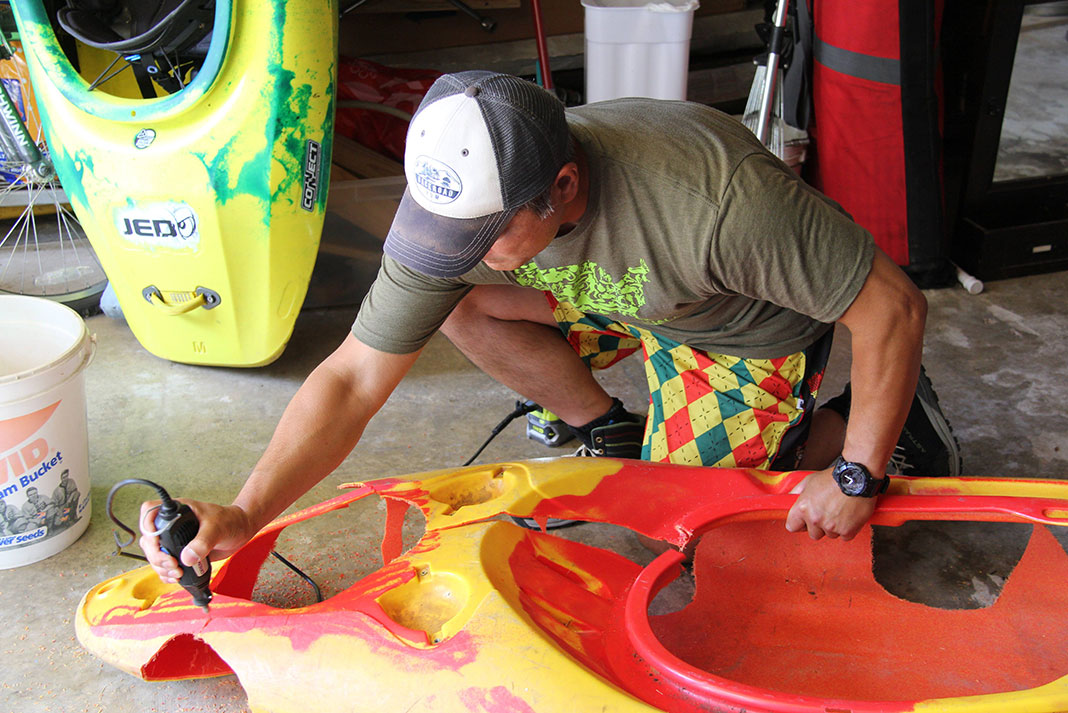
“I think I have about 10 out in my backyard now, word is getting out,” he said in an interview with Paddling Magazine. As more people learn about his work, he said offers to collect kayaks or carve them up have grown. Numerous worn kayak drop-off sites have even emerged across the U.S. Southeast, somewhat formalizing the shipping system.
In the past roughly four years, the 50-year-old high school teacher has raised enough money to provide Team River Runner program participants with 115 hard-shell kayaks, one inflatable kayak and six enclosed trailers—almost three dozen of which were acquired in the last year alone.
Between the time spent forging hand paddles and a tendon issue he suspects is related to the constant carving, Su said he hasn’t been out on the water as much as he would like. Is there any end in sight to his work?
“It doesn’t look like it,” Su chuckled.
—Bridget Reed Morawski
“I can’t tell you how many times people make snap judgments about me, and I have turned around and proven them wrong,” said Ash Manning. | Feature photo: Heather Rogers



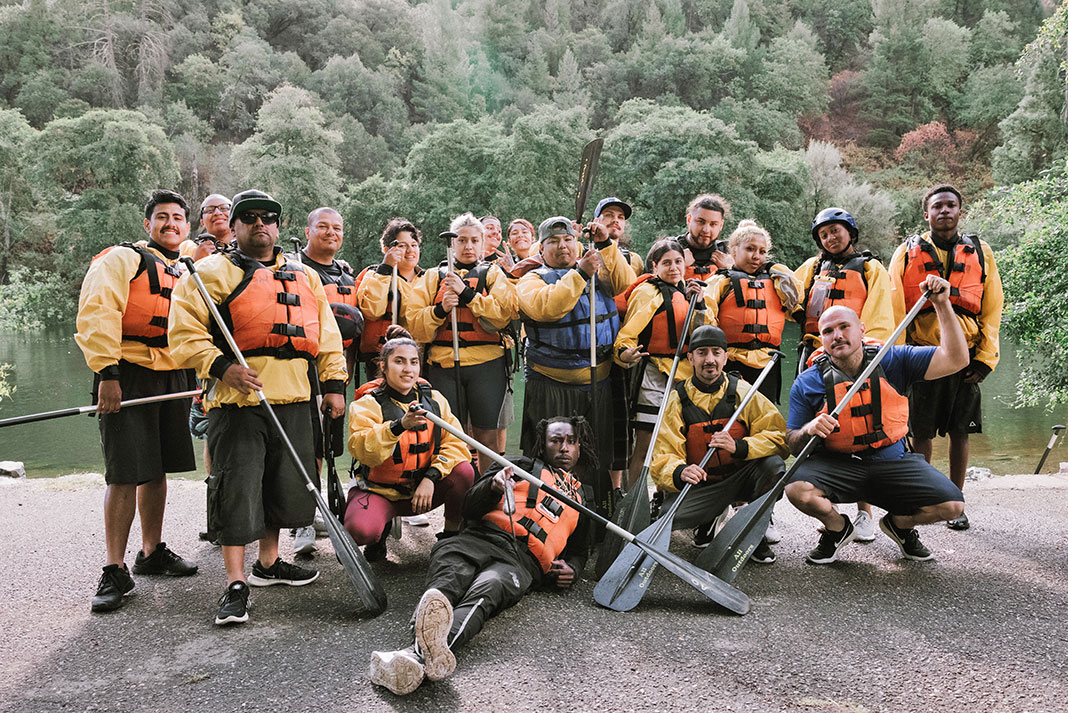
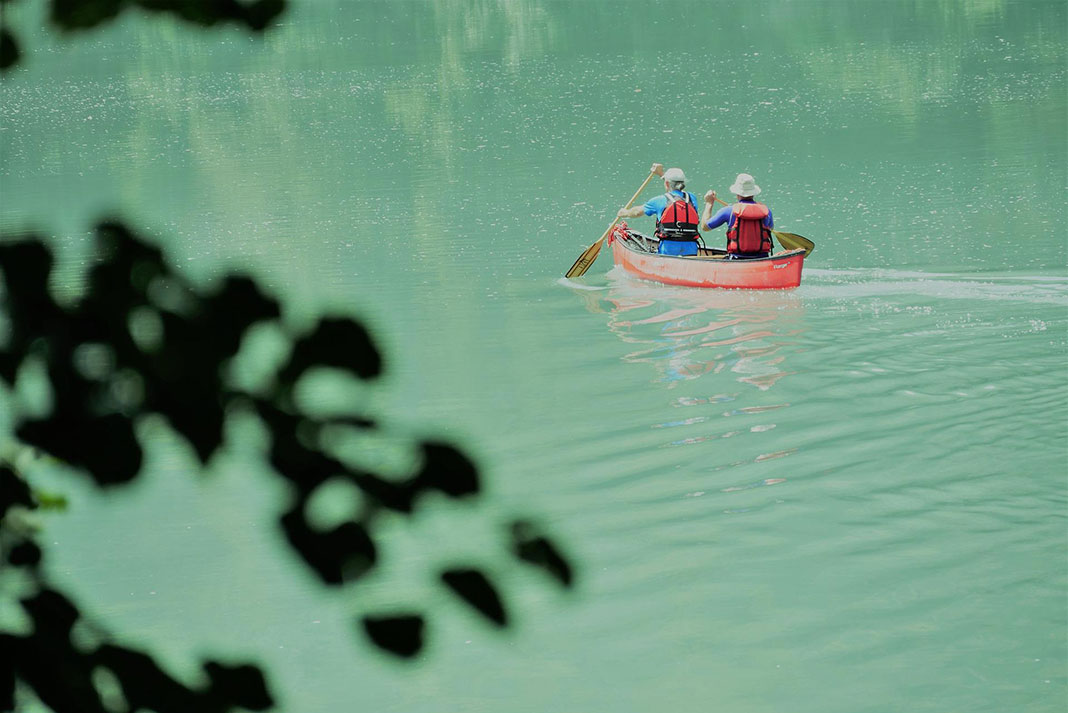
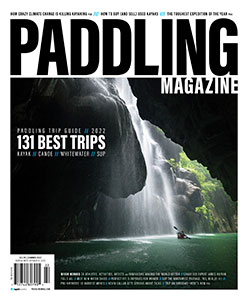 This article was first published in the Summer 2022 issue of Paddling Magazine.
This article was first published in the Summer 2022 issue of Paddling Magazine. 